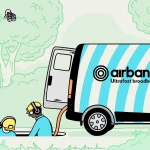The Light at the End of Shropshire’s BDUK Broadband Funding Woes
A new report from the Shropshire County Council (SCC), which examines the various options available for providing “fibre broadband” to those areas that aren’t currently projected to received it, has shown that the local authority is still struggling to match the Government’s £11.38m Phase 2 Broadband Delivery UK (BDUK) funding.
The current programme, which is valued at £26m, aims to ensure that BT’s “fibre broadband” (FTTC/P) network can cover 93% of local premises by the end of Spring 2016 (sadly only 87% will actually get “superfast” 24Mbps+ speeds) and this part of the project is already fully funded (note: Telford & Wrekin has its own plan (here) and is excluded).
Advertisement
In addition, take-up of the new connectivity in Broadband Delivery UK assisted areas under Shropshire’s scheme with BT is currently understood to be running at around 8% (here) and over 20,000 extra premises have already been upgraded.
At the start of this year the Government allocated another £11.28m to the area, which is intended to help ensure that 95% of the county can access superfast broadband speeds by 2017. Unfortunately Shropshire, which is buckling under the latest round of cuts in public spending, has struggled since earlier this year to find match-funding for the so-called Superfast Extension Programme (here and here).
The report predicts that some 28,500 premises will be left un-served by superfast broadband when the current project (Phase 1) finishes in 2016. This includes 13,000 premises that are deemed as ‘at risk’ of not being delivered by existing providers as part of their commercial plans. The intention is currently to exclude these 13,000 premises from any procurement in Phase 2 (i.e. the tender will seek a solution for the remaining 15,500).
The good news is that BDUK have confirmed they will support Shropshire Council in a Phase 2 procurement regardless of its ability to initially match the funds, albeit “on the understanding that the Council will continue to look for match funding to support actual expenditure.”
Advertisement
Shropshire’s BDUK Financial Implications
BDUK have confirmed they will support Shropshire Council in a Phase 2 procurement regardless of its ability to initially match funds on the understanding that the Council will continue to look for match funding to support actual expenditure. Any risk to the Authority is mitigated given that the Council will need to agree grant conditions prior to entering into any contract with a supplier. The costs associated with the proposed procurement exercise consist of Officer time and other expenses and have been budgeted for within the existing Revenue budget identified for the Broadband initiative.
Match funding may become available from the EU and Marches LEP funding sources in future. Details of any allocations are currently unclear and will remain uncertain until perhaps early 2015. Connecting Shropshire has projected a potential match funding figure of £9.7m to support a further procurement phase, whether as part of a BDUK Phase 2, or later as a Phase 3 project. Potential match funding sources include the LEP Local Growth Fund 2 of £7.5m (2016/17) and EU notional Funding 2014-20 of £2.2m (2015/23)
Revenue funding is currently not in place to provide a programme management office beyond current revenue commitments to September 2016, when the current programme is scheduled to complete and close. The estimated future cost is £0.240m and a new budget will need to be put in place from October 2016 should this initiative continue to be prioritised. Over the coming months work will be undertaken to both confirm the required budget and identify potential funding sources. There is a base budget allocation of £0.104m per annum, leaving a funding gap of £0.136m yet to be identified.
The report also examines a number of different approaches, from continuing with the existing deployment approach to completely abandoning their future plans. The latter is largely ruled out, although it’s interesting to note the council’s position on continued use of BT’s up to 80Mbps FTTC and 330MBps FTTP technologies. Simply, the council believes they won’t offer “value for money“.
Shropshire’s View of FTTC/P Connectivity for Phase 2/3
Owing to the network topology and geography in Shropshire the existing framework technologies, within the current Suppliers solution will not currently offer value for money:
• Fibre to the Cabinet – in the majority of cases this technology has been fully exploited. Upgrading the remaining cabinets in the Council area will not provide sufficient premises with a good uplift in broadband speed because the majority of premises are a long way from their nearest cabinet. There is however some opportunities to build FTTC structures that will give ‘good uplift speeds’ at a reasonable cost (1,000-2,000 premises).
• Fibre to the Premises – within the current contract BT will be building a number of FTTP structures. The cost of building these structures can be expensive in rural areas where premises are dispersed. The average cost of FTTP for Phase 2 has been estimated at £2,000 per premise which does not offer good value for money.
Instead the council appears to be banking on alternatives and specifically states that “the procurement using the BDUK framework would need to include assurances that new technology (i.e. Fibre to the Remote Node – FTTRN) would be deployed in order that value for money can be achieved“. However BT’s FTTrN solution, which puts cheaper mini cabinets (remote nodes) either underground or on top of telegraph poles, is still in the early testing phase and as such the final economics remain uncertain.
The council concludes by saying that there remains “significant risk” associated to procuring outside of the existing BDUK framework and not meeting the June 2015 deadline. “However, unless new technologies can be assured within a Phase 2 procurement Shropshire Council would not be able to justify using the framework,” said the report.
Looking ahead the council suggests that the balance of grant funds could be subsequently deferred and used in a further Phase 3 procurement, using additional match funds once these are secured. “This would provide the most pragmatic, flexible and expedient solution,” says the report.
Advertisement
Mark is a professional technology writer, IT consultant and computer engineer from Dorset (England), he also founded ISPreview in 1999 and enjoys analysing the latest telecoms and broadband developments. Find me on X (Twitter), Mastodon, Facebook, BlueSky, Threads.net and Linkedin.
« Broadband ISPs Braced as Amazon Instant Confirms 4K UHD Video Streams


















































Comments are closed